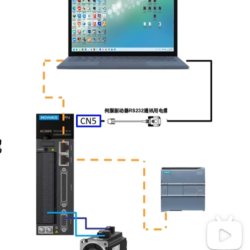The report is translated and excepted from 非实施实体(NPE)在中国大陆的专利诉讼全景
by 科睿唯安 Authors: Yuan-Yuan He,Luca Árpási
Patent litigation involving NPEs has become a common business activity worldwide. With the development of the IP protection system in mainland China, more and more NPEs are turning their attention to the mainland Chinese market. In this paper, we use the Darts-ip™ patent case database to gain insight into the patent litigation panorama of NPEs in mainland China based on factual data.
This
article defines NPEs as legal organizations (legal persons) that derive
benefits from patent rights, but do not sell or manufacture related products or
provide related services, and actively assert rights or file lawsuits to
enforce patent rights as plaintiffs.
NPE
is defined as a legal organization (legal person) that derives benefits from
patent rights but does not sell or manufacture related products or provide
related services, and actively asserts rights or initiates litigation to
enforce patent rights as a plaintiff. The scope of NPEs in this article does
not include natural persons and universities.
Evolution
of NPE litigation in China
The
scope of this article includes cases from 2010 to 2019.
Figure
1: Evolution of NPE litigation over the last decade 40 and breakdown of
litigation categories
Figure
1 shows an undeniable trend of growth in the number of patent-related
litigations in which NPEs are involved over time (although there are a few
declines in the year-to-year statistics). The number of cases increased
significantly in 2014 and 2019. It is worth noting that 2014 also saw a
significant increase in the number of NPEs litigating in Europe (62%). In the
same year, the number of NPE patent litigation cases in the U.S. declined for
the first time.
The
average annual share of litigation was 80%. In 2016, this share reached its
lowest (50%). After 2016, the number of infringement suits increased abruptly
and then remained steadily increasing. It can be inferred from the surge in the
number of invalid proceedings in 2014 that NPEs may have filed a large number
of infringement lawsuits in 2014.
NPEs
may have filed a large number of infringement lawsuits in 2014, but number of
these lawsuits was not reflected until after 2016, as judgments in infringement
lawsuits are usually rendered after the invalidity determination. Finally, we
may assume that since 2014, NPEs have likely shifted their focus from the
United States to other countries or regions, such as Europe and mainland China.
Geographic Distribution of NPE
Litigation in Mainland China
Figure
2: Geographic Distribution of NPE Litigation in Mainland China
Figure
2 shows the geographic distribution of cases in all categories other than invalidation
proceedings. The darker the purple color, the higher the number of cases in
that region. Figure 2 roughly shows the areas where cases are concentrated.
NPEs
tend to be filed in economically developed provinces and cities in mainland
China, for example, Jiangsu Province (13 cases),
For
example, Jiangsu Province (13 cases), Guangdong Province (10 cases), Beijing
City (10 cases), Shanghai City (7 cases) and Shaanxi Province (1case ). Six of
these cases ended up in the Supreme People’s Court. NPE filed the most lawsuits
in the following courts of first instance: Shenzhen Intermediate People’s
Court, Nanjing Intermediate People’s Court, and Beijing Intellectual Property
Court.
Technology Areas of Patents
Involved in Litigation
The
patent technologies involved in litigation are mainly in the field of
electronic communication technologies, with the highest number of cases in
wireless communication networks. This is related to the intense innovation and
competition in this industry and the rapid development of the domestic
communication industry.
The
chart compares the validity of the rights of NPE patents with those of patents
in general, which in this case are all patents involved in invalidation cases,
including NPE patents. The bar charts in Figures 3 and 4 show statistics on
changes in the scope of patent protection. The purple color indicates the
number and percentage of cases in which full protection was granted on the
basis of the scope of the grant, the dark green color indicates the number and
percentage of cases in which protection was granted but the scope was reduced,
and the light green color indicates the number and percentage of cases in which
the patent was invalidated in its entirety.
As
can be seen from Figure 3, the probability of a NPE patent being found valid
with full scope42 is 8%lower than that of a general patent, indicating that NPE
patents are relatively less stable. However, the total invalidity rate of
general patents is comparable to that of NPE patents.
Figure
4 shows that in Korea, the probability of a NPE patent being found valid with
full scope is very low, at 11%, while in Japan, the probability is as high as
40%.
The
probability of an NPE patent being found valid with full scope in Korea is very
low, at 11%, while the probability in Japan is as high as40%, with mainland
China in between. Compared to other countries, the probability of a NPE patent
being upheld in its entirety in mainland China is close to that of the United
States and significantly higher than that of Europe.
Trend Summary
By
analyzing the above statistics, we can identify the main trends ofNPE
litigation in mainland China.
- NPEs started to actively file lawsuits in mainland China and the number of cases sharply from 2019.
- NPEs tend to file lawsuits in developed provinces and cities.
- The patents involved in the lawsuits are mainly related to communication technologies.
- When a NPE patent is deemed valid, it is more likely to have a reduced scope of protection.






